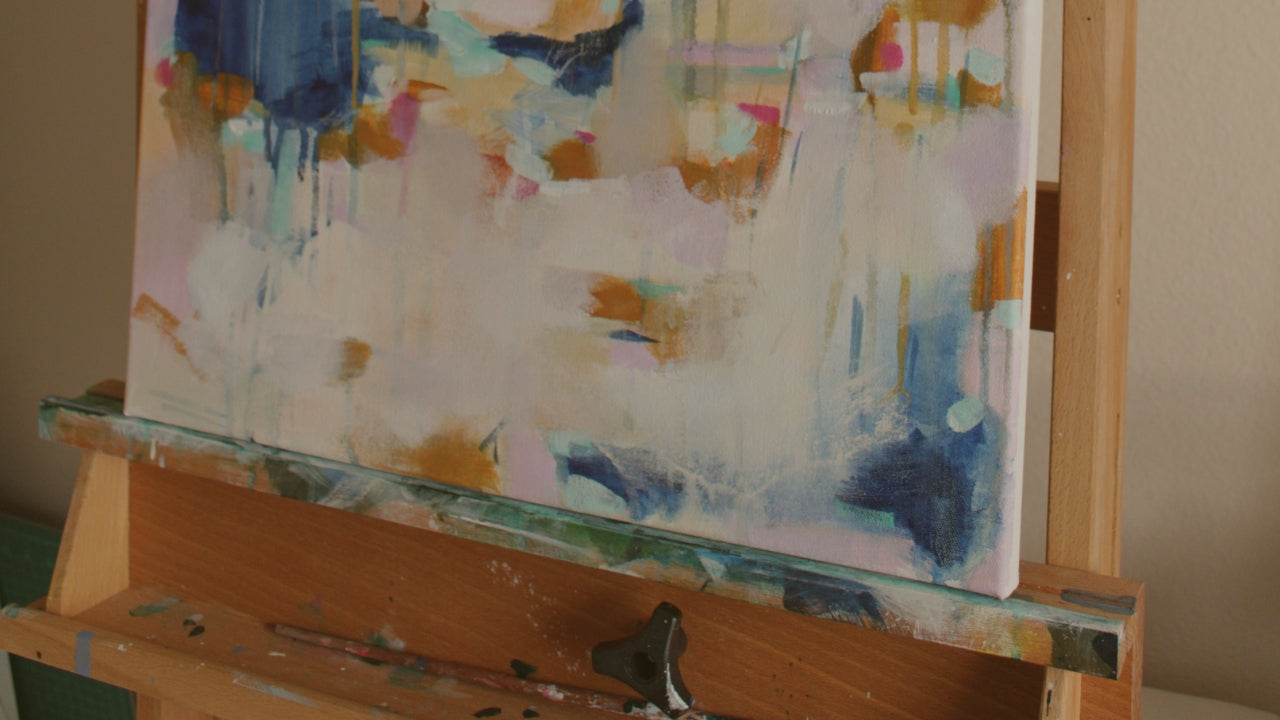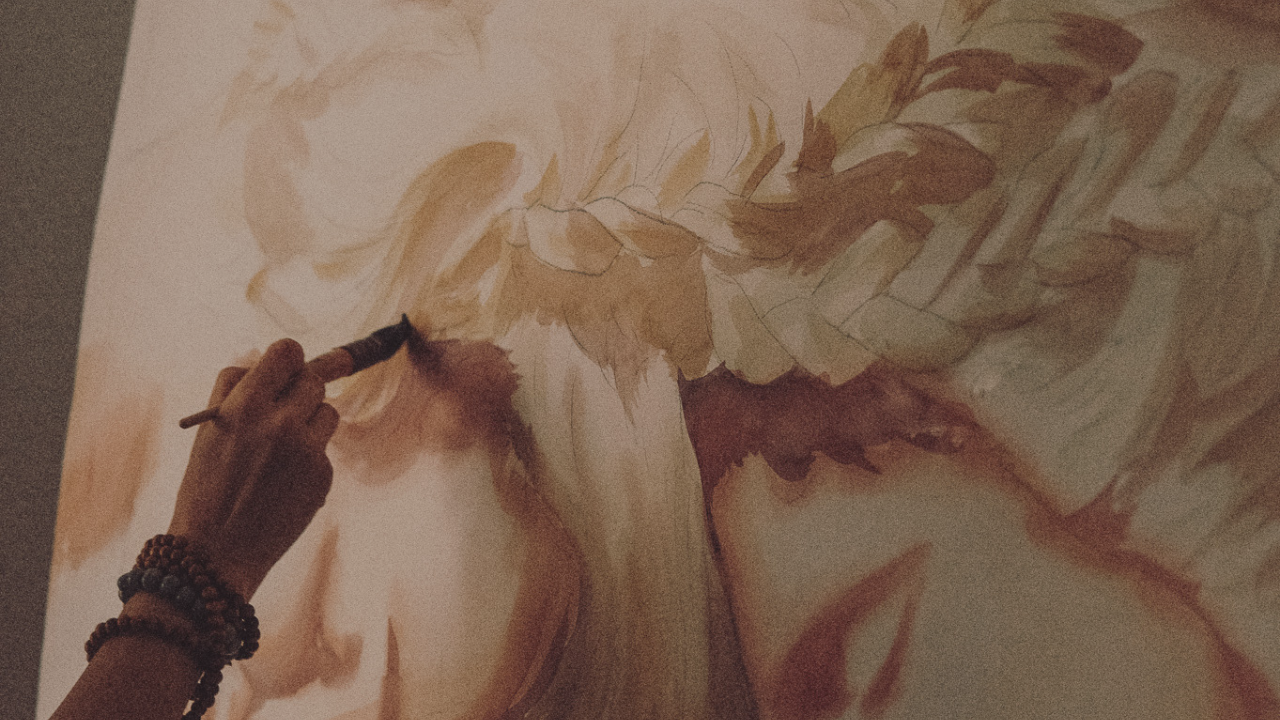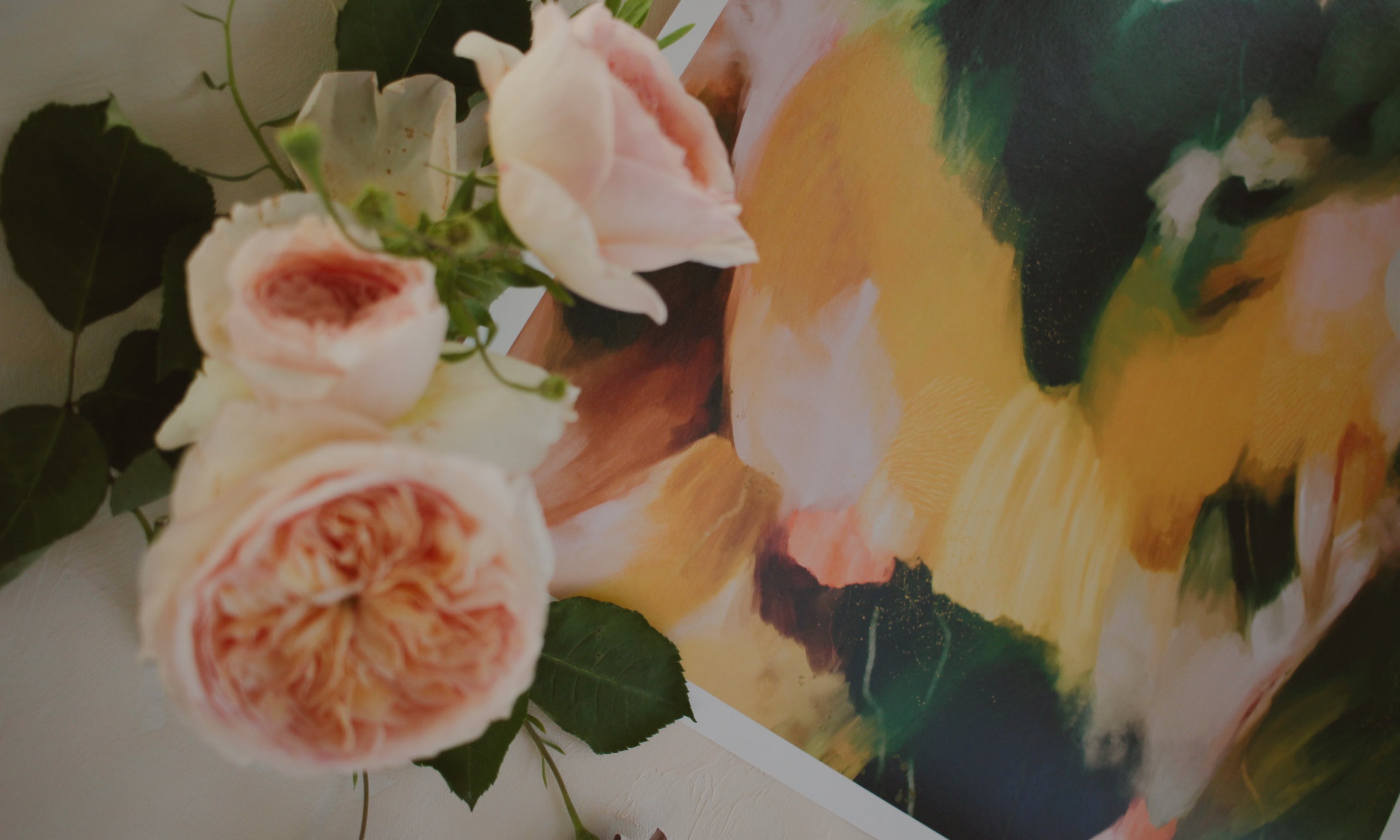
5 ways to diversify your art business for sustainable growth
Buckle up my friend, because today we’re covering a big topic and that is how to diversify your art business and why you would want to in the first place.
What does diversifying mean?
In this context, it means that you’re not relying on any one thing or person (cough cough yourself!) to bring in revenue and/or do all of the work.
In other words, it means you’re not putting all of your eggs in one basket.
You can also think about this in the same way that financial advisors advise against putting all of your money on one stock. It’s simply too risky. Instead, they suggest diversifying with different stocks and bonds, etc to create a balanced portfolio.
And as an artist, you’re applying the same idea. You’re spreading the weight of generating revenue to different products and people. That way it’s not all dependent on you and your capacity, which let’s be honest, is limited.
There’s only so much you can do in a day, and you only have so much energy.
Why you would want to diversify your art business
As a solopreneur, you’re already doing the job of 10 full-time employees! Not only do you have to create the art, which involves an immense amount of creative, emotional, and physical labor, but you also have to market it, AND update the website, AND package and ship orders, AND be your own customer service rep, AND do admin stuff like bookkeeping and filing taxes, AND, and, and...
Y’all it’s a lot! I got tired just writing all of that down!
So it’s no wonder thinking about growing your business feels daunting. There’s no breathing room in your day-to-day.
Diversifying your business may seem a little counterintuitive because it sounds like you’re adding more work to your plate, but you’re not just diversifying for diversity's sake, you’re diversifying to delegate the work.
So that you have more time do what you want: to simply live a slower pace of life, be with loved ones, or spend more time actually making art.
Let me show you how you can do that.
Here are 5 levels, or ways, of diversifying your art business
Diversifying at the Product Level
This is adding a new product to your current lineup so that you’re not only selling one type of product.
For example, if you only sell original paintings, then adding a new product, like art prints, would lessen the pressure of having to make and sell all of your paintings to meet your income goal.
Another advantage of adding a new product is that you can introduce a new price point, whether that’s high or low, and reach more people.
Offering a product at a higher price point can also lessen your workload because the sale of one higher-priced product can equal the sale of many smaller products. This means that you’re bringing in more revenue with a single order, and, in turn, you don’t have to spend a ton of time managing a bunch of small orders.
Alternatively, offering a product at a lower price point gives your existing customers, who aren’t ready to purchase your highest-level work, an opportunity to own something of yours.
For example, I offer phone cases with my art on them, and they are significantly less expensive than my prints which are my highest-level work. They are what I would call an “easier buy” because the customer doesn’t have to think about where they’re going to use it or what size they should get, etc. like they would if they were buying a large-scale print. A customer who wants a new phone case already knows what size they need, they just need to pick out their favorite design.
If you’re offering a new product at a lower price point, I would recommend pairing it with the next level.
Diversifying at the Production Level
This is when you outsource the production and, if possible, the shipping of a product you offer. Not worrying about the physical production and shipping logistics can help recover more of your time and energy.
For instance, my phone cases, which I just mentioned, are a print-on-demand product. The customer orders a product on my website, and it gets sent to the manufacturer who then makes it and ships it on my behalf.
So no matter if I sell 1 or 100, my workload is nearly the same. Save for maybe dealing with more customer service emails, but FAQ’s and pre-written email responses can mitigate that.
Another example would be dropping art prints.
Diversifying at the Platform Level
This is when you sell on different “platforms”.
I’m using the term “platforms” loosely here. It can encompass online and off-site platforms like selling in a gallery or wholesale to a retail store.
The point is that selling on different platforms allows you to reach more people in places where people are already shopping for what you sell.
Now there are sub-levels within this. Some will require more maintenance than others.
For example, I would consider selling on Etsy to be high-maintenance, because you have to add new products and update listings, do keyword research, etc. It’s basically like having a second website.
The same can be said for online platforms like Saatchi and Artfinder.
You have to put in the work and you have to give it enough attention in order for it to perform well. But the benefit is that their built-in audience can help minimize some of the marketing you do because people will find you organically and generate sales.
This one's a bit of a toss-up because you might just trade marketing time for admin time.
However, not all online platforms are high-maintenance. This may vary from person to person, but in my experience, platforms like Society are relatively low maintenance.
I sold my art on Society from 2013 to 2019ish, and I hardly ever marketed it. The only maintenance that was required was adding new art. Their built-in audience coupled with the fact that they featured my art on their home page, meant that it organically drove traffic and sales to my Society6 shop, which generated passive income for me.
The passive income I earned from Society6 freed up my time and energy to pursue other things.
However, like I mentioned before, you don’t have to limit yourself to just online platforms. You can also branch out by partnering with other companies, galleries, or businesses that have a physical location.
For example, I work with a reproduction gallery that has a physical location. They have permission to sell select prints of my art on my behalf, and they handle all of the printing, shipping, customer service, et cetera.
This is a form of passive income for me, which means that the money it generates is independent of my productivity. And that's the kind of support that allows me to spend more time creating art and less time doing all of the business-related tasks.
Another benefit to selling on various platforms or partnering with other businesses is that it can help grow your audience and/or bring press opportunities. Like from Etsy, I got magazine press and I was even one of their featured sellers.
Similarly, I got press by being on Society6. My art was featured on Better Homes and Gardens (maybe it was HGTV? It was one of those two for sure!).
Saatchi also included my art on their new this week section on their homepage.
All those things, create new entry points for people to discover your work. The more entry points you have, the easier it is for people to find you.
Diversifying at the Service Level
This is when you introduce a new service, preferably one of high value, to your current lineup.
Let’s talk about what I mean when I say “high value”. This should be a service that’s going to have a big impact on your income but doesn’t deplete your energy or take up all of your time. It’s something that you know your collectors would love and you can charge a premium for it.
An example of this could be offering limited commissions or custom work and you only take on a few per year.
My personal example of a high level service is that I have a service that is exclusive to art consultants.
If you don’t know art consultants are people who procure art for their clients
The consultants that I work with have clients in the hospitality industry, healthcare, luxury residences, and more.
Many of the consultants that I work with are repeat customers, and we have developed a relationship.
Whenever they have a new project, let's say they're sourcing art for a new hotel, then they already know about my service, and if it fits the project, they will pitch my art to their client. If the client accepts it, then we start the process and I get paid.
The big benefit is that I don't have to actively go out and seek these projects. The consultants bring them to me.
It's almost like having an agent without paying for one. Of course, they are not obligated in any way, shape, or form to use my art in their projects, because they're not actually my agents, but because I render a high-quality service, there is a level of trust between us and they keep coming back again and again.
This whole service helps generate income independent of my productivity.
And this brings me to my last point.
Diversifying at the Customer Level
If you're currently selling to one type of customer (I'm going to assume that you're most likely selling directly to regular consumers, which is known as B2C aka Business to customer/consumer) then one way to diversify your business is to sell to other businesses.
My previous example of working with art consultants would also be considered diversifying at the customer level because I’m working with other businesses. This is often referred to as B2B (business to business).
Another example of B2B would be something like wholesale.
One of the advantages of selling to B2B is that they have different needs, follow different trends, and tend to have larger budgets (or purchase more frequently) than B2C customers. This means that the economics between B2B and B2C might not always correlate, which is a good thing!
If your B2C sales take a dip, then your B2B revenue can help you get through tough times.
For example, I sold art directly to a hospital and they purchased many pieces for their hallways and patient rooms. They even became a repeat customer and purchased more pieces for their other associated hospitals. This allowed me to sell a large quantity of art to a single client, which wouldn’t really really happen with B2C. At most B2C would most likely buy a few pieces in one transaction but not more than 5 (at least in my case!).
Selling to B2B is a great option because there’s the potential to make decent money without needing a large “audience”. You just need a small list of B2B customers who bring you projects repeatedly.
Where to Start
Alright, so I just gave you a sea of ideas on how you can diversify your business at different levels.
Now you might be asking yourself: “Where do I start?”
Start with just one thing first! Don’t try to do them all at once. Each level takes time to set up, so give yourself ample time to work on it and go at a sustainable pace.
“But how do I choose which one?”
Let me walk you through a few different scenarios.
If you want to offer a new product, like you’ve been playing with the idea for a while, see if there’s a way to outsource the production and have it dropshipped to your customer. This will help you launch the product faster because you don’t have to make it, and you don’t have to spend extra time fulfilling orders. Most of the time and energy you’ll spend is at the beginning setting it up (designing the product, ordering samples, etc) and marketing it. (See my favorite low-key marketing ideas)
If your time is super limited, but you currently like you’re doing too many things and not seeing enough revenue for your efforts, then offering a high-level service could help. This will bring in large chunks of revenue at a time and ensure that you’re well compensated for your work.
If you feel like you’ve maxed out your current customer base or want to try a different approach, like selling to B2B, then you can diversify at a customer or platform level. Like I said before you can do this in different ways. You can sell directly to other businesses, do wholesale, get your art into a physical or online gallery, work with art consultants, etc. This will help you reach a newer audience while generating more revenue that isn’t solely dependent on your productivity.
Again, try not to do them all. The whole point of this is to create support and lessen the burden of having to do it all yourself.
The best advice I can give you is to feel into where you need support right now in your business. Along with what you feel you have the energy for, or at least feel curious about. I will always encourage you to tap into your intuition because only you know what’s best for you, your art, your business, and your lifestyle.
-------------------
Build a supportive art business with passive income. Discover 7 empowering ways to earn from your creativity without exhausting all of your time and energy. Dive into the comprehensive guide Passive Revenue Streams for Artists and begin your journey today.





Leave a comment
This site is protected by hCaptcha and the hCaptcha Privacy Policy and Terms of Service apply.